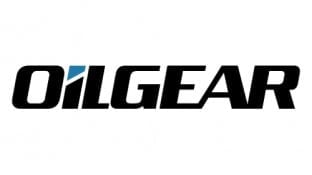Sales Tracking Tools
BAM! helps OEM's create the most informed and sales-ready outside sales networks in the industry.
Sales reps in the field and managers / RSM's need a different kind of sales tracking tool to stay current on CRM data and become high-performers, a tool that:
- Provides leading indicators in real time
- Can be instantly accessed from anywhere (even offline) and easily shared with customers
- Unifies communication across the entire network
Trusted by leading manufacturers:







Sales Tracking Tools for Management and Sales Enablement
“You can’t improve what you don’t measure.” - Peter Drucker
These words of wisdom from management consulting legend Peter Drucker can guide any company looking for sustainable improvement in its sales operations. Looking for growth, consistency, higher-performance among your entire sales network?
Look at your measurement practices first.
On the other hand, if it were easy to implement sales tracking and measurement tools, it wouldn’t be noticeably absent from so many company’s sales operations handbooks.
- Should sales tracking tools be built into your CRM?
- Do you need to acquire new software?
- Can you use a mobile sales app?
Measure the right things
It is critical to measure sales activities in a disciplined and regular way in order to ensure accountability and improvement over time.
But you have to measure the right things, or it ultimately is just a waste of time that produces no useful results.
Measure too little, and you save your precious time but have no meaningful data upon which to make decisions.
Measure too much, and you can bog down your sales team and managers with bloat and morale-killing.
How to choose the right indicators to track
Lagging indicators can be useful but be clear that they tell you about the past. If you want to know how you did last month, last quarter, or last year, you can find out by checking your lagging indicators.
Unfortunately, by definition, they are lagging, i.e., after the fact metrics. They are useful but not in their capacity of prediction, for which they have none.
Leading indicators are much better in general. Why? Because leading indicators tell you the future. If you have a leading indicator that correlates with a future result, you have something valuable that can shape your organization’s activities and efforts.
Non-sales example
Lagging Indicator
Let’s say you want to lose 10 pounds in 10 weeks. The scale telling you how much you weigh is a lagging indicator - it gives you information after the fact. Looking at the scale at the end of two months is like looking at a P&L at the end of the quarter. Not zero usefulness but certainly not as useful as something that could have helped you before the fact.
Leading Indicator
Back to the 10 pounds in 10 weeks months scenario. Now, what would a leading indicator here be? Something that you could track before you lose weight that would correlate to how much weight you could or would lose. Now, we know that a pound of fat can be burned by having a deficit of 3500 calories. We also know that it’s generally considered healthy and sustainable to be in no more than a 500 calorie deficit per day. So, by tracking our calories in and calories out we can create a leading measure of a calorie deficit of 3500 per week (or 1 pound of fat per week), and we could predict accurately that in 10 weeks we’d be down 10 pounds.
Much better than hoping for a good result…hope is NOT a strategy!
Sales example
Lagging Indicators
In sales, just like in financial management, there are plenty of lagging / after the fact indicators. These often take the form of weekly, monthly, quarterly, and annual sales numbers. Individual reps, teams, even entire regions under the watchful eye of Regional Sales Managers (RSM’s) all have their own quotas to meet and key performance indicators (KPI’s) serving as a measuring stick.
Some of the typical lagging measurements in sales include:
- # of Deals Won / Lost
- $ of Deals Won / Lost
- Pipeline velocity
- Sales cycle length (from start to close)
- Lead to opportunity ratio
- Customer Lifetime Value (LTV)
- Customer Acquisition Cost (CAC)
Leading Indicators
Why are leading indicators so important? Because they are the difference between only having a GPS (that can tell you where you are and how you got there) and having a map so you can chart your course to where you need to go. No journey is going to be automatic. There will be course-corrections. But having the information to predict where you will be in the future is invaluable to organizations that take the time to identify those leading indicators.
- Prospecting (the earlier the better)
- Qualified pipeline
- # of SQL’s
- # of MQL’s
Ideally, you have historical numbers on each stage in your pipeline, e.g.
- 100 marketing-qualified leads (MQL’s) convert at 30% to
- 30 sales-qualified leads (SQL’s) convert at 50% to
- 15 qualified sales opportunities convert at 40% to
- 6 closed won deals
If you have these numbers nailed down you can predict with consistency that 100 MQL’s will convert at 6% to 6 deals won.
This all looks good “on paper” of course and it’s easier said than done. But with some work, experimentation, and optimization, along with a set of reasonable expectations, a team can set the foundation for measurement that will serve the organization well into the future by helping it more predictably reach its targets. It’s just being able to identify “if we add this much to the top of the funnel (leads), we know this will be the ultimate result (sales).”
Sales Tracking is All About the Process
So, let’s say you have your leading indicators all picked out and lined up.
Now you need to start tracking them and making sure that everyone is on the same page. How do you do it?
A few of the questions you need to answer as you put together your ongoing routine for tracking sales leading indicators:
- How often does the system of information get updated?
- How often does the team review?
- When are manager reviews with reps?
- What is the reporting format?
Sales Tracking Tools Requirements
In order for sales tracking to be effective, it must be consistent, available, and actionable - in addition to focusing on the leading indicators.
A good process, defined
Any process can be defined as good if it is one that uses people effectively. Emphasis on the word “used.” It is no good putting all this effort into creating an effective and efficient process, making it usable and visible, if no one actually uses it. Making sure that your process design makes a difference is one of the key challenges for creating good processes.
Information must be consistently handled and presented to be of value. This goes for both inputs and outputs. Inputs should be automated as much as possible to reduce human error. Outputs should be visible for review.
Any information that is important needs to be easily available to the people who need it. This means available via desktop as well as mobile device. Fast loading. Easy to understand. Intuitive.
One of the most important features of the digital ecosystem today is that people expect tools to be available wherever they are. It used to be that software and hardware was extremely limiting - you had to be in a certain place to access systems, e.g., the office. Then laptops emerged and suddenly people had much more flexibility to work from different locations, within the office and beyond. Now with the rise of mobile devices, a new level of freedom is available.
How does CRM fit into sales tracking?
Within any sales tech ecosystem there will inevitably be a tool for customer relationship management (CRM), the purpose of which is to provide a tool to help understand customers better AND to use that information to engage customers with a superior customer experience (CX).
Picking the right CRM
Customer relationship management is a broad and deep category of marketing and sales tools. Different software products vary widely in features, benefits, costs, and fit for different types of organizations, but there are three general types of CRM.
Collaborative
The primary focus of collaborative CRM systems is establishing higher levels of inter- and intra-team interaction. Too often in sales organizations barriers to communication emerge over time creating information silos that are detrimental to communication. Especially in large organizations, and distributed sales networks, distances can present significant challenges to real-time collaboration.
CRM systems of this type help to ensure that teams have current customer contact information and sales data, regardless of where they work or their organizational unit. This can also help to break down barriers between marketing and sales, providing key insights to sales about buyer intent signals that may inform which playbook to use to close the sale.
One of the most important features of collaborative CRM systems is the capability to pick up where prior conversations with customers left off. A common customer frustration or point point is having to say the same thing over and over to customer success managers as the contact is handed off from one rep to the next while moving through sales stages.
Operational
CRM systems of the operational type seek to provide a higher level of efficiency while doing the work of maintaining and growing customer relationships. They also help with visualizing the customer journey to make it as fast as possible to take the correct next action with the contact in the context of the sales process.
Another feature of this type of CRM system is the focus on automation. Repetitive tasks can be automated and completed in a fraction of the time, generating real time savings for team members, sometimes saving 80-90% of the time they spend on routine steps.
When sales team members can spend less time on administrative tasks they have more time to spend on solving customer problems, providing higher levels of service, and working on other high-value activities like prospecting and closing.
Analytical
The point of analytical CRM systems is to help teams better understand their customer data. With all of the digital tools available, there can be an overwhelming amount of data to sort through. A CRM tool that can provide useful analysis of these data to create something actionable for the company can be very helpful to organizations seeking to improve their results.
Beyond simple data analysis is predictive analytics, the ability to uncover trends. For example, do customers that take a certain action (interacting with your organization a certain number of times, using your product in a certain way) tend to show higher loyalty, remain customers for longer, generate more lifetime value for the company? These predictive insights have sweeping implications across the company for both sales and marketing.
The right sales tracking tools for your business
Systems are composed of people, process and technology. Creating sales tracking tools is never going to be about just picking the right piece of technology. The most important piece of getting things right is understanding the nature of your sales organization, how it works, and how the various teams and functions collaborate and learn.
Ultimately, the best tools will the result of a three-step process:
- Nail down your best leading indicators
- Determine the most efficient way to measure and publish the information
- Incorporate your CRM data and one or more of the three types
This process is technology agnostic, ultimately. Companies often start their journeys with sales tracking tools in Excel or Google Sheets or Smartsheet, then evolve to a widely adopted CRM like HubSpot, or a custom mobile sales app, and depending on their size may adopt a much larger system later, e.g. SalesForce.
But no one size fits all. The roadmap can still help you find the right path for your organization.
To learn more about how a sales tracking tools can help your business, let's start a conversation or schedule a demo of BAM!
